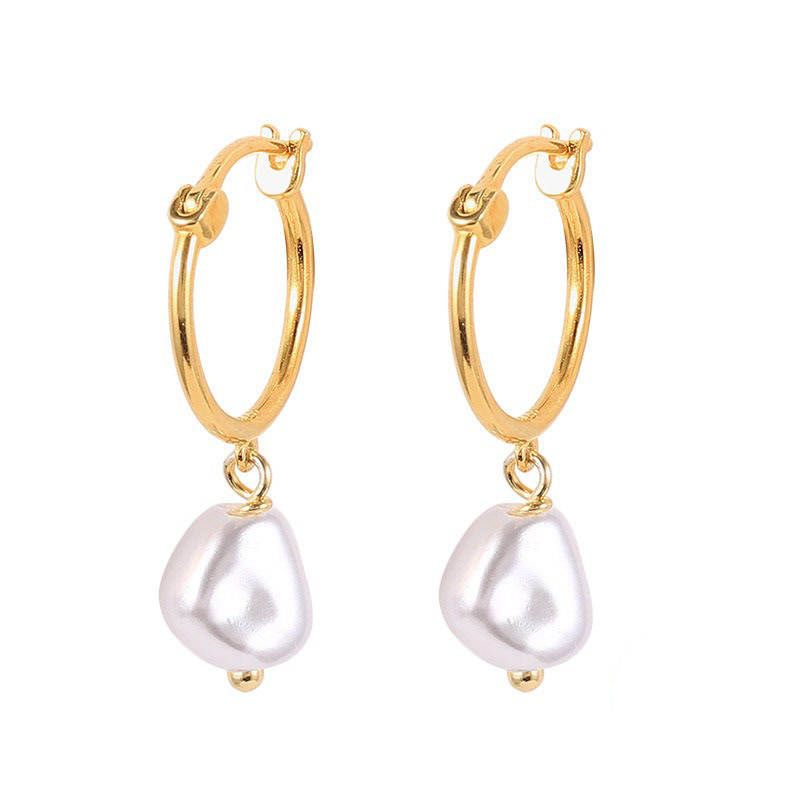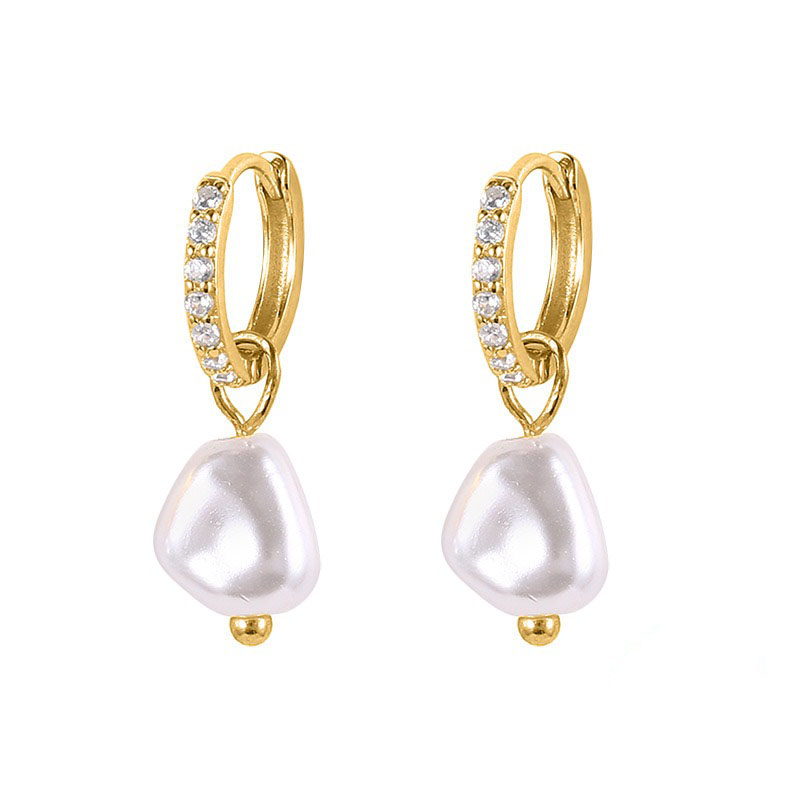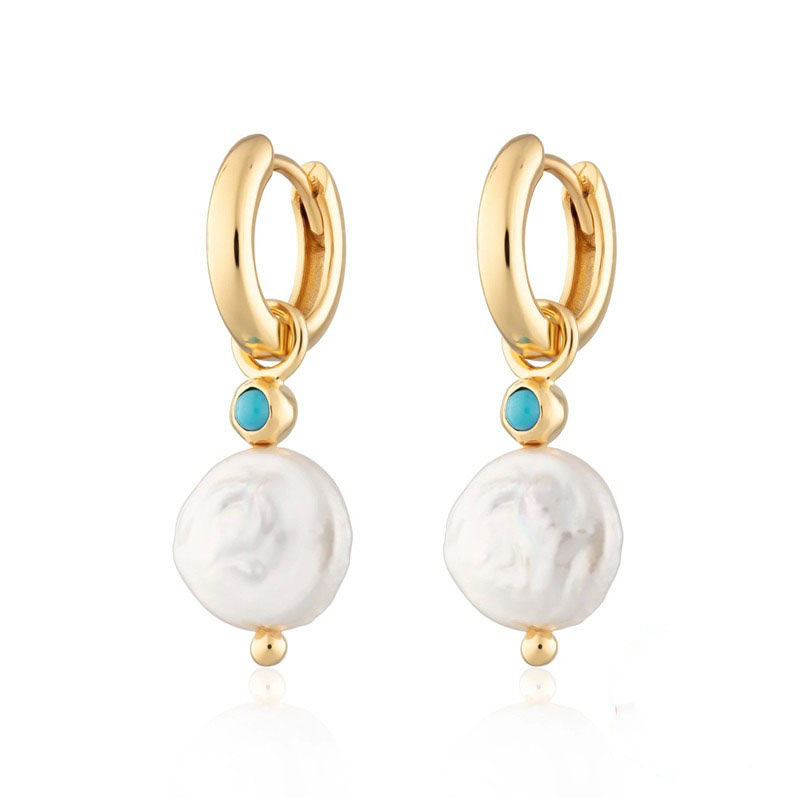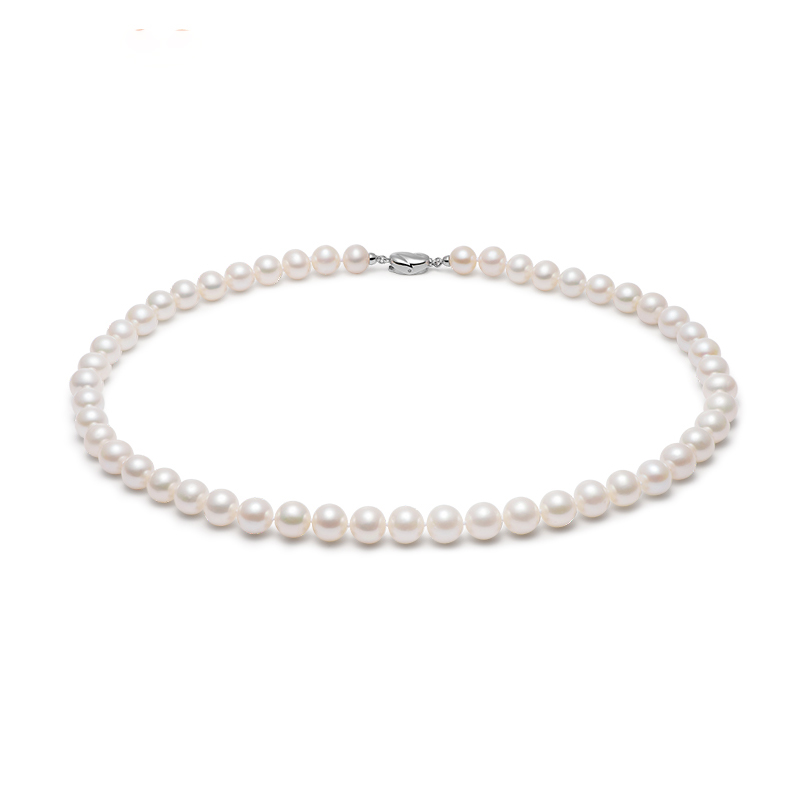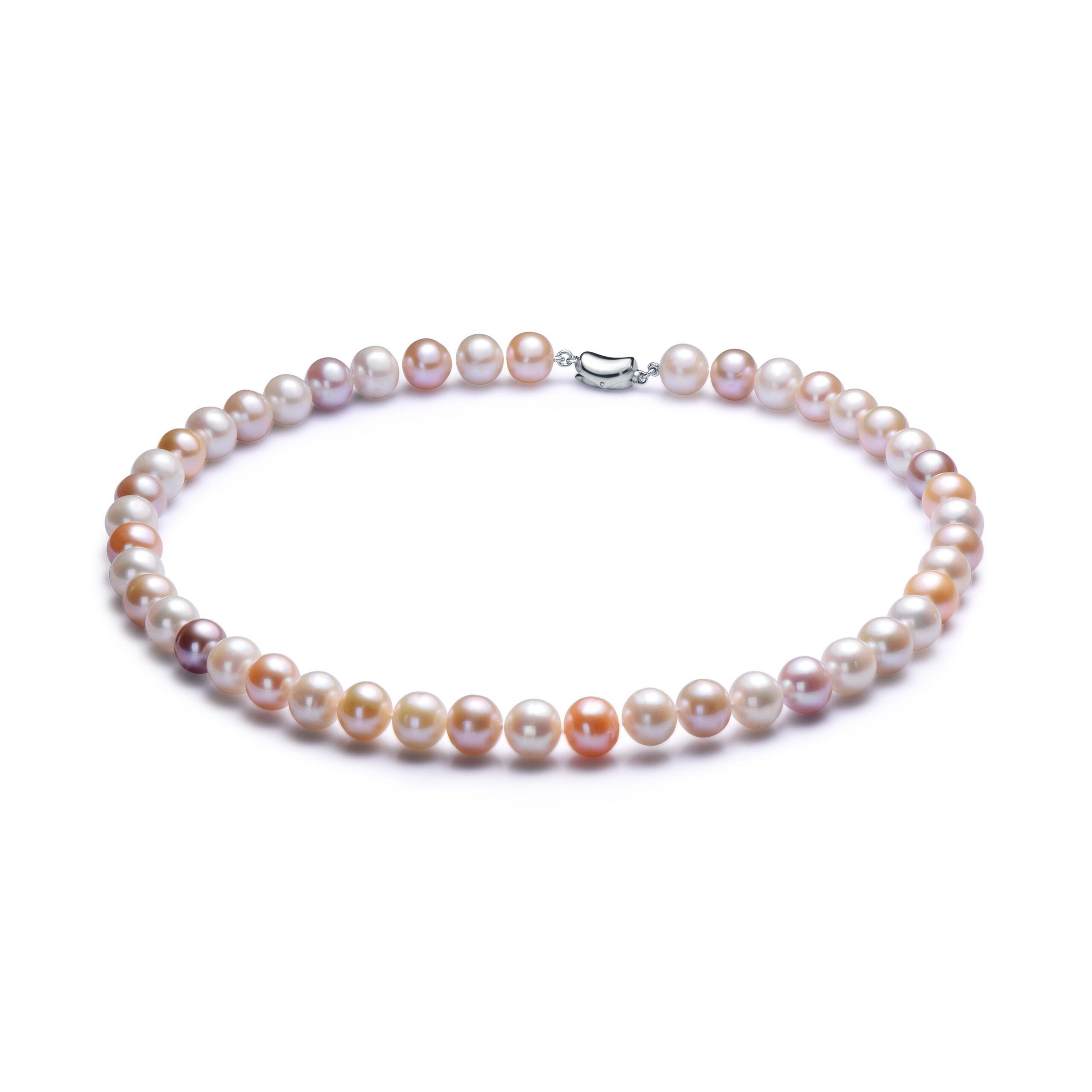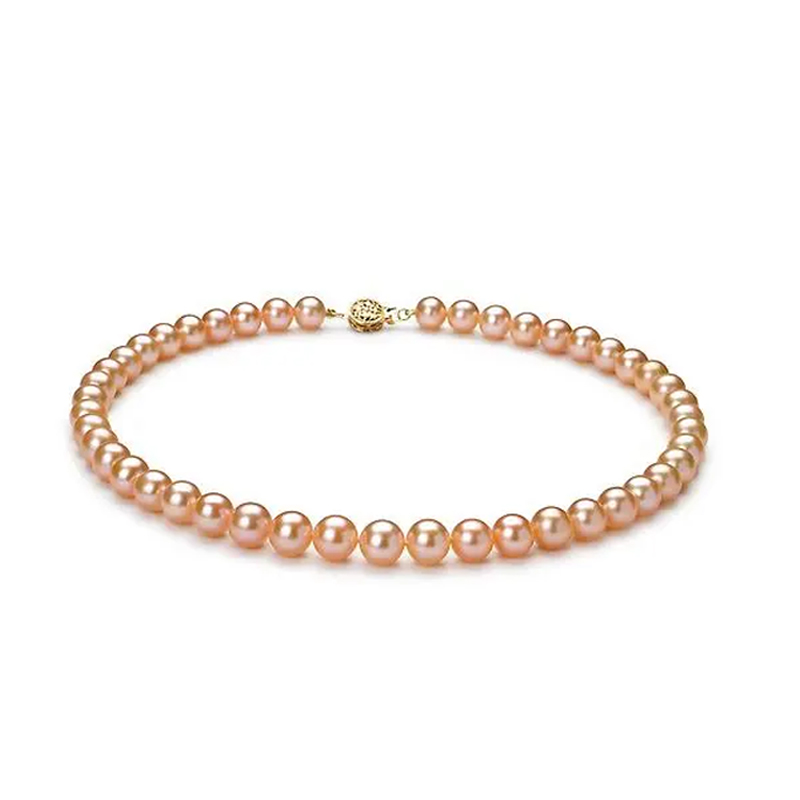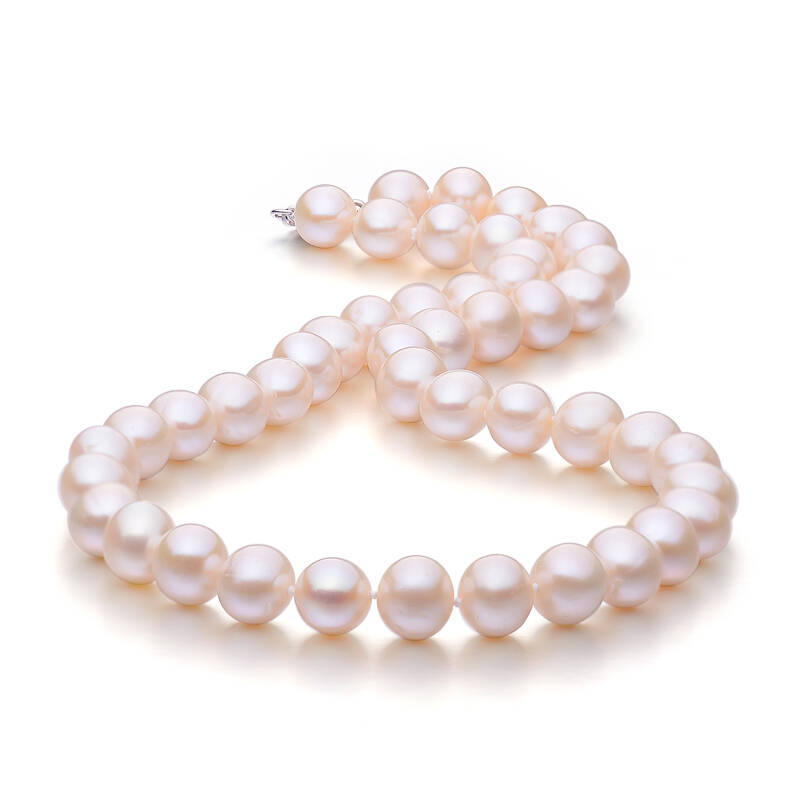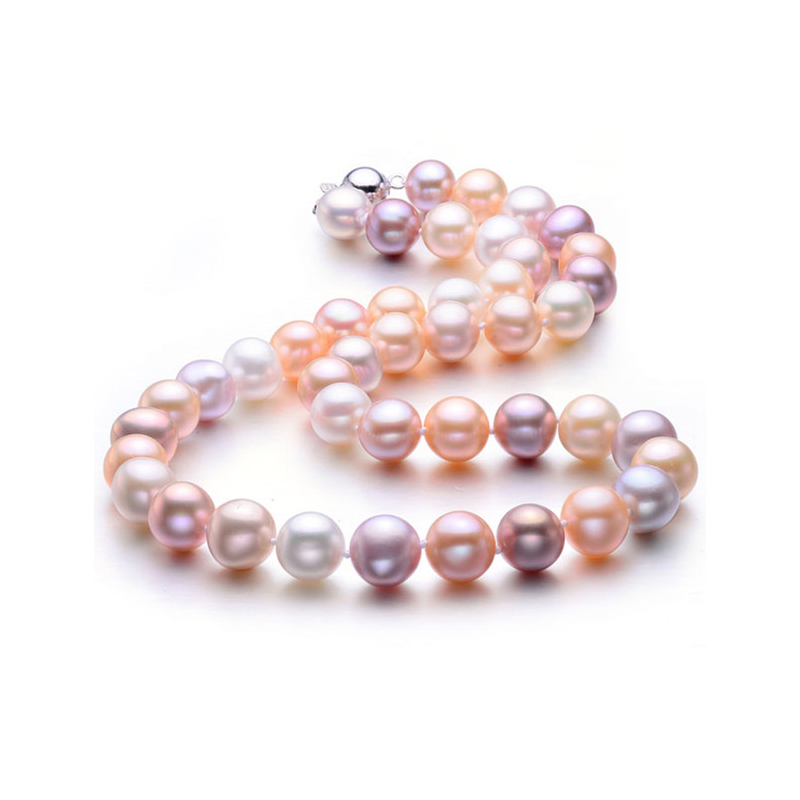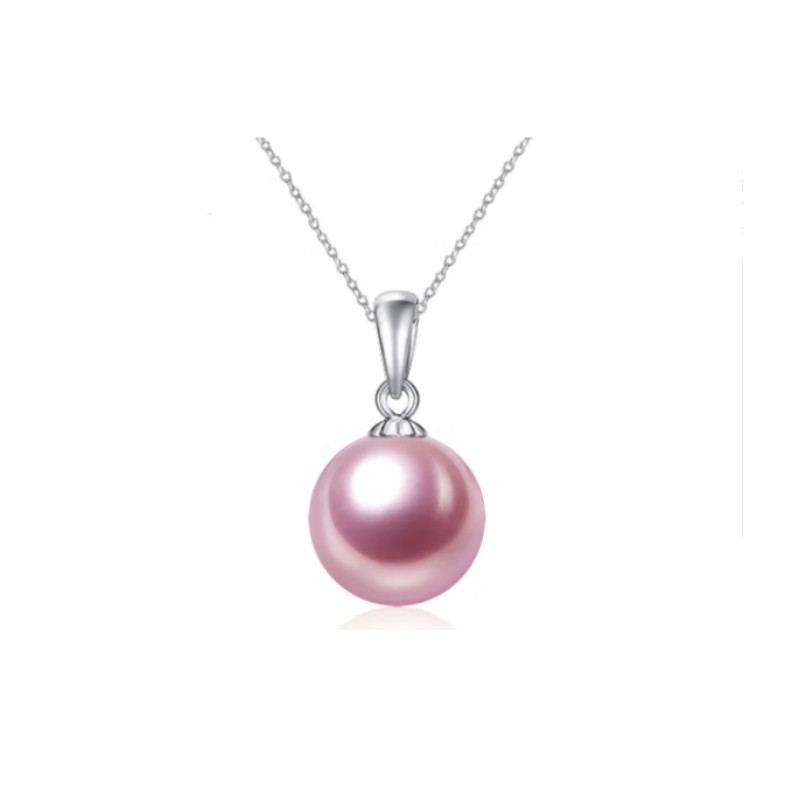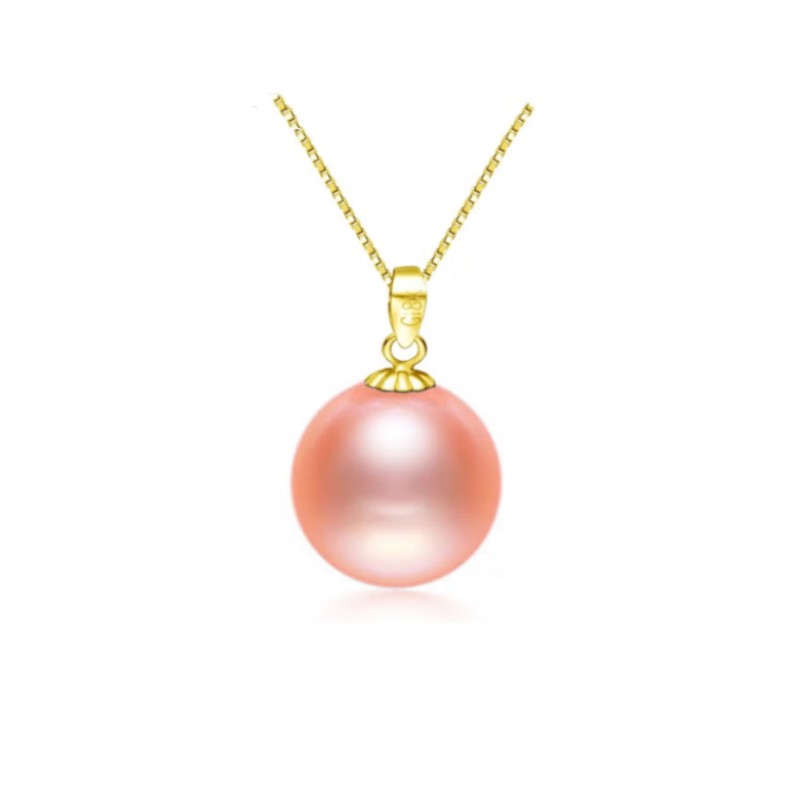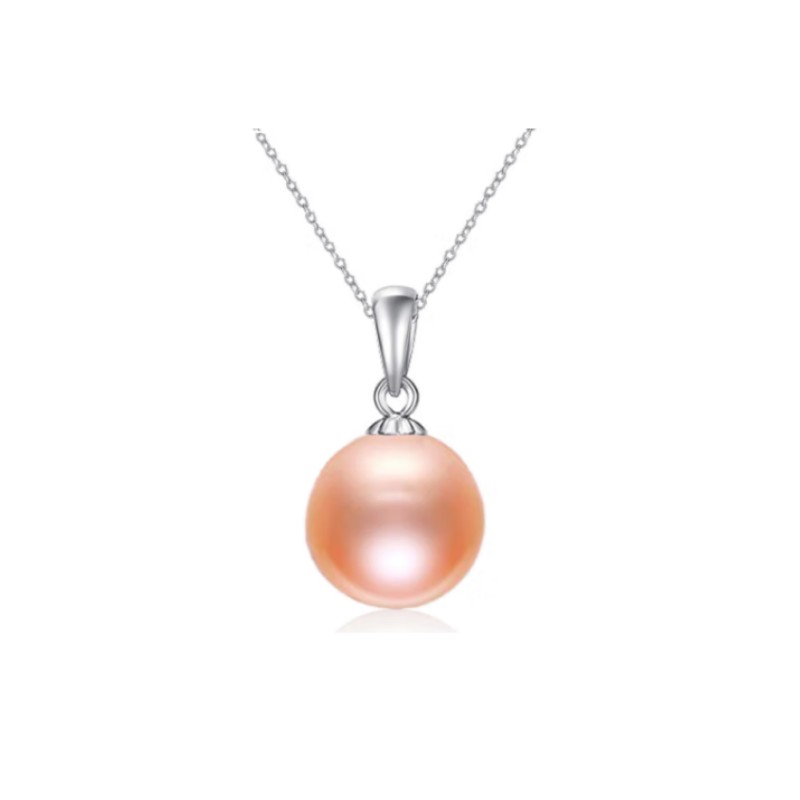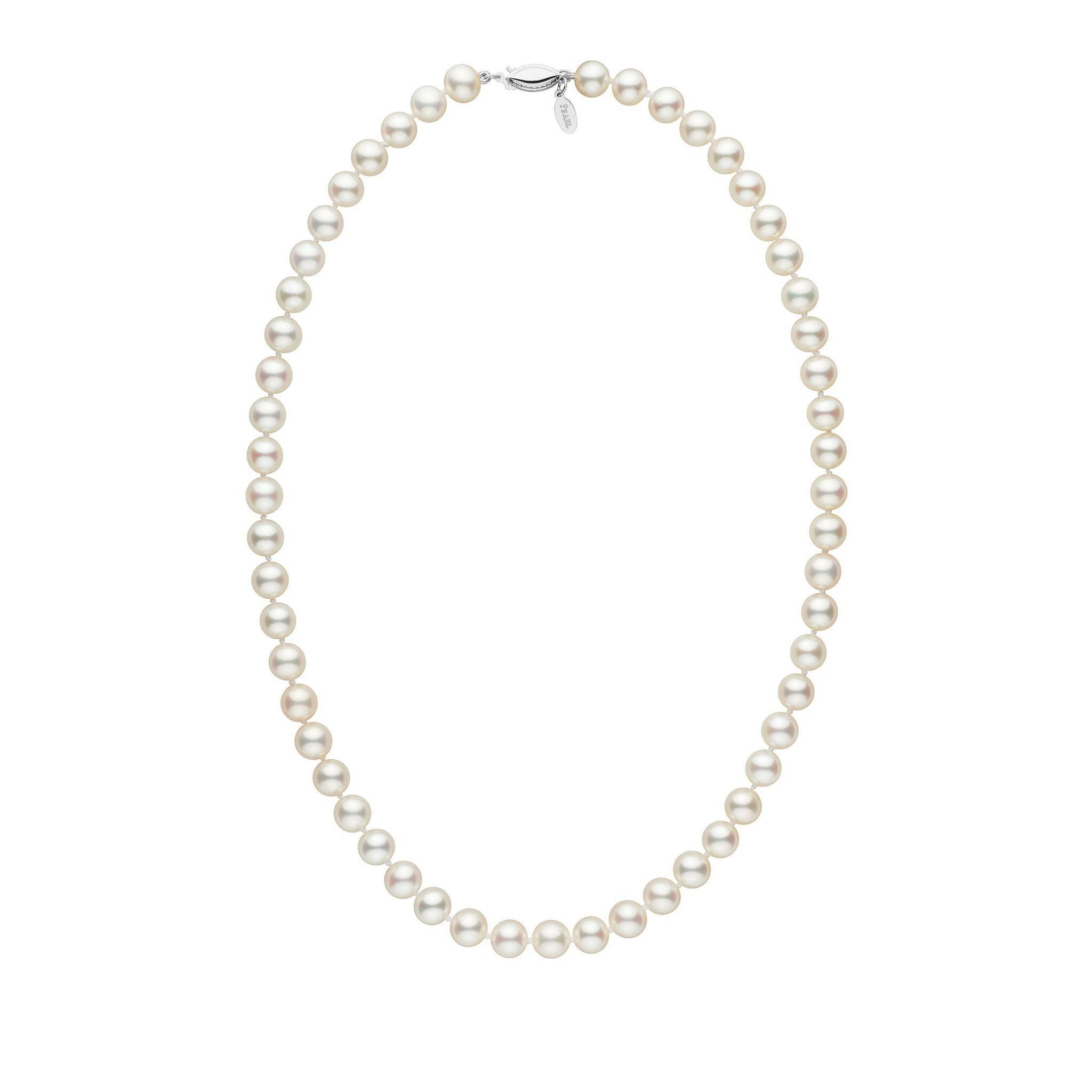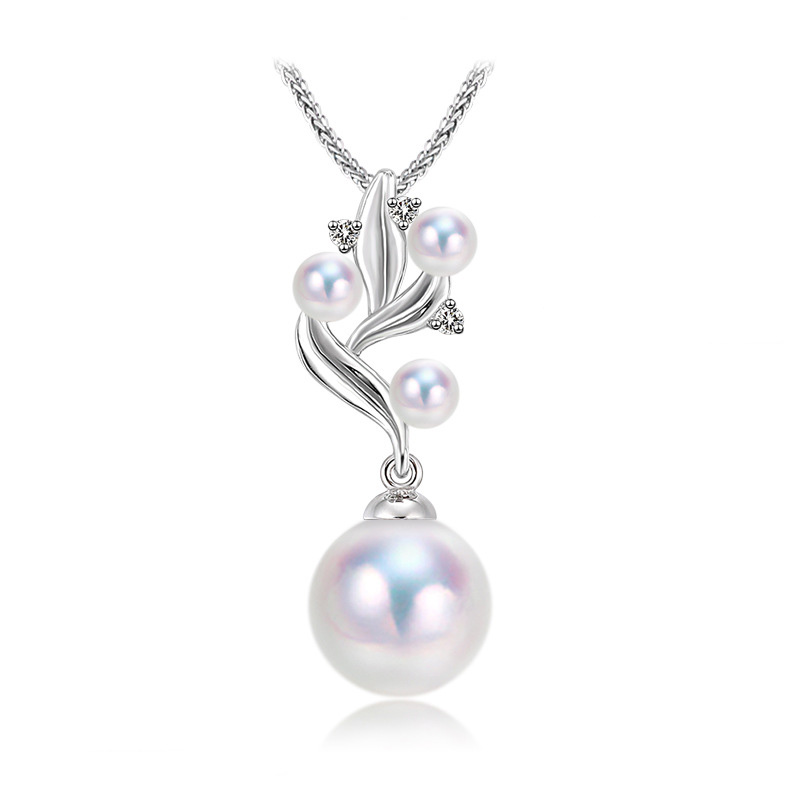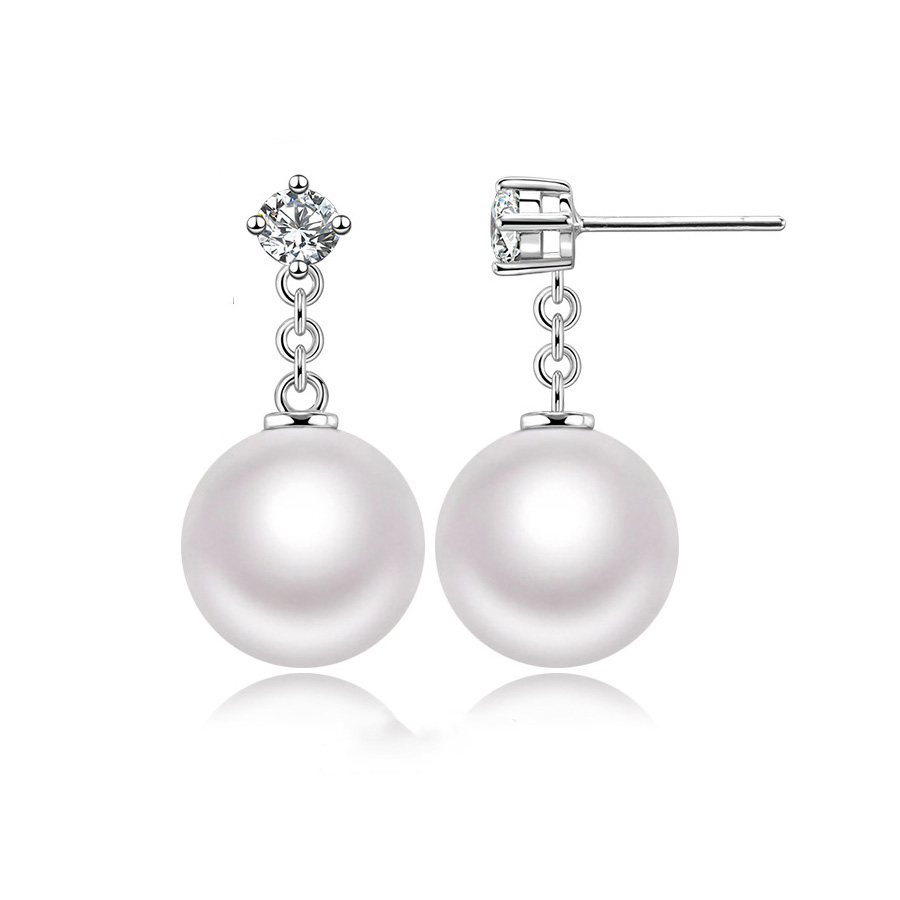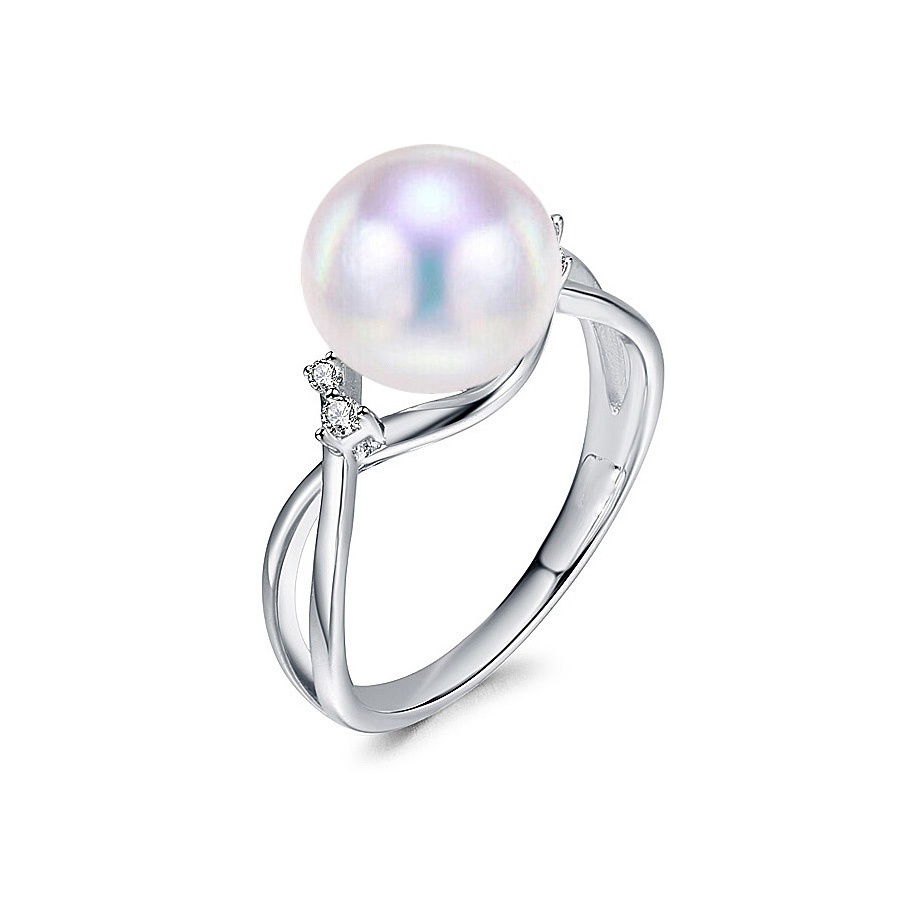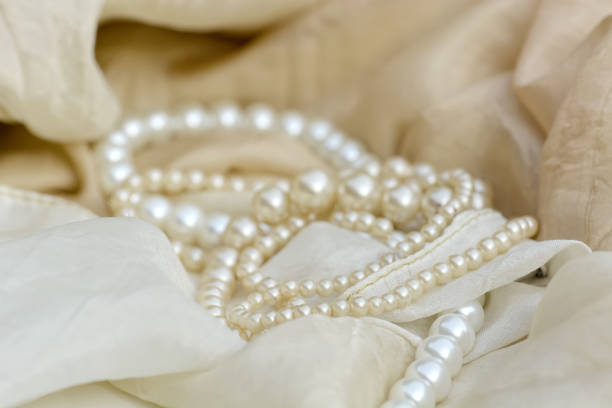Freshwater Pearls
Freshwater pearls are a true gem of the jewelry world. These beautiful and unique pearls are formed in freshwater rivers, lakes, and ponds, and are often available in a variety of natural hues, including white, pink, lavender, and even black.
From classic pearl necklaces to more modern and edgy bracelets and earrings, freshwater pearls can add a touch of elegance and sophistication to any outfit. Freshwater pearls are a true gem in the world of jewelry and are loved by many for their unique beauty and versatility.
Original price was: $249.00.$189.00Current price is: $189.00.
24% Off
Original price was: $259.00.$199.00Current price is: $199.00.
23% Off
Original price was: $259.00.$199.00Current price is: $199.00.
23% Off
Original price was: $289.00.$239.00Current price is: $239.00.
17% Off
Original price was: $249.00.$189.00Current price is: $189.00.
24% Off
Original price was: $259.00.$199.00Current price is: $199.00.
23% Off
Original price was: $359.00.$299.00Current price is: $299.00.
17% Off
More Freshwater Pearl Recommendations
Similar Products
Original price was: $699.00.$599.00Current price is: $599.00.
14% Off
Original price was: $2,599.00.$1,999.00Current price is: $1,999.00.
23% Off
What is a cultured freshwater pearl?
Cultured freshwater pearls represent one of the most popular and accessible types of pearls available in today’s jewelry market. Unlike their naturally occurring counterparts, which form by chance when an irritant enters a mollusk, cultured freshwater pearls result from deliberate human intervention in the pearl-forming process.
Characteristics of Cultured Freshwater Pearls
Cultured freshwater pearls have several distinctive characteristics:
- Composition: Made entirely of nacre (unlike many saltwater cultured pearls that have a bead nucleus)
- Shape: Traditionally more baroque (irregular) than round, though modern cultivation techniques have improved roundness
- Size: Range from tiny 1-2mm seed pearls to 15mm and larger
- Colors: Available in a wide range of natural pastel colors including white, cream, pink, lavender, and peacock
- Luster: Typically have a warmer, softer luster compared to the metallic shine of Akoya pearls
- Surface: Often display distinctive surface textures that contribute to their unique character
Market Dominance of Chinese Production
While Japan’s Lake Biwa was historically famous for freshwater pearl production (so much so that all freshwater pearls were once colloquially called “Biwas”), today’s freshwater pearl market is overwhelmingly dominated by Chinese pearl farms.
China’s advantages include:
- Vast land area with numerous lakes, rivers, and irrigation systems
- Large workforce
- Favorable growing conditions
- Decades of investment in improving cultivation techniques
In fact, Chinese innovations have dramatically improved the quality of freshwater pearls. In the mid-1990s, the industry changed the type of mussels used and reduced the number of implants per mussel, resulting in higher quality pearls.
Value and Appeal of Freshwater Pearls
Cultured freshwater pearls are generally more affordable than saltwater varieties, making them popular choices for both everyday jewelry and designer pieces. Despite being the most commonly produced type of pearl, high-quality freshwater pearls with exceptional roundness and luster can still command significant prices.
Their appeal lies in their accessibility, wide range of colors and shapes, and the fact that they are composed entirely of nacre—giving them excellent durability and the potential to last for generations with proper care.
Are freshwater pearls real?
Yes, Freshwater Pearls Are Absolutely Real Pearls!
Freshwater pearls are 100% genuine pearls. They are not fake, artificial, or imitation pearls. There’s often confusion about this because of price differences between freshwater and saltwater varieties, but both are authentic pearls from living mollusks.
What Makes a Pearl “Real”
A real pearl is defined by its composition and origin:
-
Composition: Real pearls are made of nacre (pronounced NAY-ker), the same iridescent material that lines the inside of mollusk shells. This natural substance is composed of microscopic crystals of calcium carbonate arranged in layers.
-
Origin: Real pearls form inside living mollusks (either mussels or oysters) as a natural defense mechanism when an irritant enters the shell.
Freshwater pearls meet both these criteria – they are composed entirely of nacre and form inside freshwater mussels.
The “Cultured” vs. “Natural” Distinction
The confusion about whether freshwater pearls are “real” often stems from misunderstanding these terms:
-
Natural pearls: Form completely by chance in the wild without human intervention. These are extremely rare and expensive today.
-
Cultured pearls: Form with human assistance (pearl farmers insert an irritant), but the pearl formation process itself is still entirely natural. The vast majority of all pearls on the market today, both freshwater and saltwater, are cultured.
As one expert source notes: “It’s a common misconception that saltwater pearls are all natural and freshwater pearls are all cultured. In fact, in the majority of cases both saltwater and freshwater pearls are cultured, as natural pearls are exceedingly rare!”
Freshwater Pearl Composition
Freshwater pearls are actually composed of more nacre than many saltwater varieties. While saltwater pearls typically form around a bead nucleus, freshwater pearls develop around a tiny piece of tissue that eventually dissolves, resulting in a pearl that is solid nacre throughout.This solid nacre composition makes freshwater pearls quite durable and gives them their characteristic soft, satiny luster.
Why the Confusion Exists
The misconception that freshwater pearls aren’t “real” likely stems from several factors:
-
Price difference: Freshwater pearls are more affordable than saltwater varieties, leading some to assume they must be “fake”
-
Production volume: A single freshwater mussel can produce up to 30 pearls at once (compared to just 1-2 for saltwater oysters), making them more abundant
-
Historical quality issues: Early Chinese freshwater pearls (pre-1990s) were often lower quality, creating lasting impressions that still influence perceptions today
The Bottom Line
Freshwater pearls are absolutely real pearls. Their more accessible price point is due to greater abundance and production efficiency, not because they’re imitation or artificial. In fact, their solid nacre composition makes them excellent value for pearl lovers seeking durability and natural beauty at a more affordable price point.
Freshwater Pearl Colors
Freshwater pearls offer one of the most diverse color palettes in the pearl world, ranging from subtle natural tones to vibrant treated hues. This variety is one of the reasons freshwater pearls have become so popular in contemporary jewelry design.
Natural Freshwater Pearl Colors
The most common natural colors for freshwater pearls include:
- White – Clean white pearls with varying levels of brightness
- Cream – Soft, warm off-white tones
- Pink – Light to medium rose tones
- Lavender – From pale lilac to deeper purple shades
- Mauve – A blend of pink and purple tones
The lavender color range is particularly special, as it’s a natural color found exclusively in freshwater pearls. These can range from delicate pale lilac to deeper purple hues with various overtones like aquamarine, silver, green, gold, or rose.
Overtones and Color Complexity
What makes pearl colors fascinating is that they often display secondary colors called “overtones” that appear as iridescent sheens across the pearl’s surface:
- Lavender pearls often display cool overtones of aquamarine and green, or warmer gold and rose tones
- White pearls may show silver, pink, or blue overtones
- Cream pearls frequently display gold or rose overtones
This complexity creates pearls that appear to change color subtly as they move in different lighting conditions.
Color and Value
In freshwater pearls, unusual natural colors can command premium prices:
- Deep, rich lavender pearls with strong overtones are particularly valued
- Perfectly white pearls with high luster are classic and sought-after
- Rare natural peach or salmon colors can be quite valuable
However, it’s worth noting that unlike with some gemstones, the most valuable freshwater pearls aren’t necessarily the most colorful ones – factors like luster, surface quality, shape, and size often have a greater impact on value than color alone.
Matching Colors in Jewelry
When selecting freshwater pearl jewelry, color matching becomes important:
- Perfectly matched colors are more difficult to achieve and therefore more valuable in strands
- Slight color variations are normal and expected in genuine pearls
- Some designs intentionally use gradient or multi-color patterns
With their remarkable range of colors from subtle to striking, freshwater pearls offer options for every taste, style, and occasion.
How much are freshwater pearls worth?
Freshwater pearls are among the most affordable pearls on the market, making them accessible to a wide range of jewelry enthusiasts. Their value varies significantly based on several factors, but they generally offer excellent value compared to their saltwater counterparts.
Typical Price Ranges for Freshwater Pearls
As of 2024, freshwater pearl prices typically fall within these ranges:
- Low Quality: Below $30 per pearl
- Average Quality: $30-$50 per pearl
- Fine Quality: $75-$5,000 or more per pearl
For complete jewelry pieces, you can expect to pay:
- Freshwater Pearl Necklaces: $200-$5,000+ depending on quality, size, and length
- Freshwater Pearl Earrings: Starting around $50 for simple studs
- Freshwater Pearl Bracelets: $50-$2,000
Value Compared to Other Pearl Types
Freshwater pearls are significantly more affordable than saltwater varieties for several reasons:
- A single freshwater mussel can produce up to 50 pearls at once (compared to just 1-2 for saltwater oysters)
- They’re more widely cultivated, particularly in China
- The cultivation process is generally less labor-intensive
For comparison:
- Akoya Pearls: $150-$6,000+ for quality pieces
- Tahitian Pearls: $300-$36,000+ for quality pieces
- South Sea Pearls: $250-$100,000+ for quality pieces
Factors That Affect Freshwater Pearl Value
Several key factors determine the value of freshwater pearls:
- Shape: Round pearls command the highest prices, while baroque (irregular) shapes are less expensive
- Size: Larger pearls (9mm+) are more valuable than smaller ones
- Luster: High-shine pearls with sharp reflections are worth more
- Surface quality: Fewer blemishes means higher value
- Color: Natural colors with attractive overtones can increase value
- Matching: Well-matched pearls in strands or pairs command premium prices
Investment Value
While freshwater pearls are beautiful and durable, they generally aren’t considered investment-grade gems due to their relative abundance. However, exceptionally high-quality freshwater pearls can hold their value well over time.
For those seeking pearls primarily as an investment, collectors typically focus on rare natural pearls or exceptional saltwater varieties instead.
The “Sweet Spot” for Value
For most buyers, the best value in freshwater pearls comes from finding pieces with:
- Good luster
- Minimal surface blemishes
- Near-round shapes
- Well-matched colors
- Sizes between 7-9mm
These pearls offer much of the beauty of more expensive varieties at a fraction of the cost, making them an excellent choice for everyday jewelry that combines beauty, durability, and affordability.
How to Tell if Freshwater Pearls Are Real?
If you’re wondering whether those freshwater pearls you own or are considering purchasing are authentic, there are several reliable methods to determine their genuineness. Real freshwater pearls have distinctive characteristics that differentiate them from imitations.
1. The Tooth Test
One of the most classic tests for pearl authenticity:
- Gently rub the pearl against the edge of your front teeth (the biting edge)
- Real pearls will feel gritty, sandy, or slightly rough
- Fake pearls will feel smooth and glassy
While effective, be aware that some sophisticated fake pearls now have coatings designed to mimic this gritty feeling. Also, this test isn’t always practical in retail settings for hygiene reasons.
2. The Friction Test
As an alternative to the tooth test:
- Gently rub two pearls together
- Real pearls will create a slight gritty feeling and may produce a small amount of fine, iridescent powder
- Fake pearls will glide smoothly against each other without creating any powder
You can also rub the pearl against a glass surface to check for the same effect.
3. Surface Examination
Real freshwater pearls have natural imperfections:
- Look for tiny bumps, pits, or ridges on the surface
- Examine under magnification if possible
- Real pearls will show slight irregularities and an uneven texture
- Fake pearls typically have perfectly smooth surfaces
Even high-quality pearls will have minor surface variations that are visible under magnification.
4. Weight Test
Assess the weight of the pearls:
- Real pearls feel heavier than most fake ones (especially plastic imitations)
- Gently toss them up and down in your hand to feel their weight
- The exception is solid glass beads, which can actually be heavier than real pearls
5. Temperature Test
Touch the pearls to feel their temperature:
- Real pearls feel cool to the touch initially before warming up against your skin
- Plastic fake pearls are typically room temperature
- Glass fake pearls may also feel cool initially but take longer to warm up than real pearls
6. Drill Hole Inspection
If your pearls are strung, examine the drill holes:
- Real pearls typically have small, clean drill holes
- Under magnification, fake pearls often show flaking or chipping around larger drill holes
- Imitation pearls may have a shiny paint-like coating visible around the drill hole
7. Color and Uniformity Assessment
Examine the color characteristics:
- In a strand of real pearls, there will be slight variations in color between individual pearls
- High-quality real pearls often have an overtone – a translucent secondary color that appears on the pearl’s surface (like pink or green hints)
- Fake pearls typically have a uniform, one-dimensional color lacking depth
- Real pearls will also show slight variations in size and shape, even in well-matched strands
The Vinegar Test (Use with Caution)
This test can damage real pearls, so it’s not generally recommended except as a last resort:
- Place a drop of vinegar on the pearl
- Real pearls will react with the acid in vinegar (they’re made of calcium carbonate)
- The surface will show slight fizzing or erosion where the vinegar makes contact
- Fake pearls will not react to the vinegar
For a conclusive determination, it’s best to use multiple testing methods together rather than relying on any single test. If you have valuable pearls and remain uncertain, consider having them evaluated by a professional jeweler or gemologist.
What You Should Know About Freshwater Pearl Jewelry
From the moment you clasp a pearl necklace around your neck, you're not just adorning yourself with jewelry; you're embracing a piece of natural artistry, carefully cultivated and crafted to perfection.
But in recent years, a bold new trend has emerged - the rise of oversized pearl necklaces that make a dramatic statement. These eye-catching pieces feature large, luminous pearls that command attention and elevate any outfit to new heights of sophistication.
Pearl Necklace is The Best Christmas Gifts For Women,A pearl necklace in particular stands out as one of the best Christmas gifts for women. This piece of jewelry has long been associated with grace and elegance,
What Are Good Christmas Gifts For Your Mom,One timeless and elegant option to consider is pearl jewelry. Pearls have long been prized for their natural beauty



